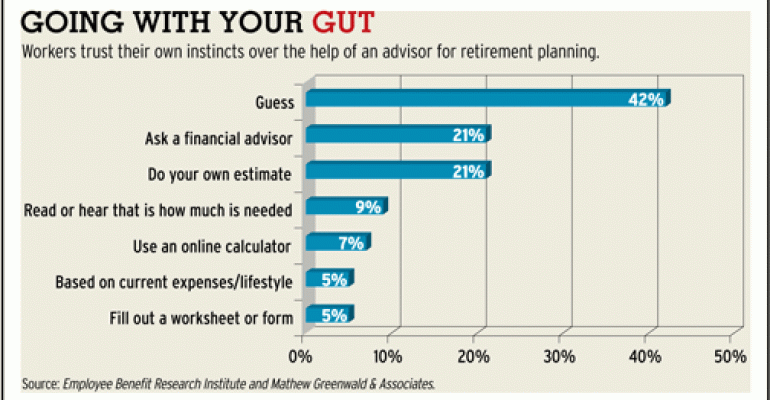A distressingly high percentage of workers in America don't even so much as attempt a back-of-the-cocktail-napkin calculation when trying to figure out what they'll need to retire on, according to the 21st annual Retirement Confidence Survey by the Employee Benefit Research Institute. When asked what method they use to determine the savings they need for their golden years, the biggest response was “Guess” (42 percent). Seeking out a financial advisor for help drew just half that response. There's a price that's paid for going it alone, of course; EBRI found that a sizable percentage of workers have unrealistic estimates of what they need in order to retire (31 percent thought they could get by with less than $250,000 for a comfortable retirement.) Advisors get a little more respect elsewhere in the survey. Among workers who are making savings and investing decisions, 47 percent would prefer suggestions from professionals but would make their own decisions; another 18 percent would use professionals' recommendations most of the time, and 13 percent would prefer a pro to do the work for them.

What's in a Name
Christian Magoon, CEO of Magoon Capital, an asset management consulting firm, says ETF ticker symbols mean a lot when it comes to getting people's attention and garnering assets. In fact, IndexIQ recently launched its IQ Global Agribusiness Small Cap ETF — CROP. Other clever ticker symbols on the market include MOO, the Market Vectors Agribusiness ETF; FAN, the First Trust Global Wind Energy ETF; and YAO, the Claymore AlphaShares China All Cap ETF. — DB






